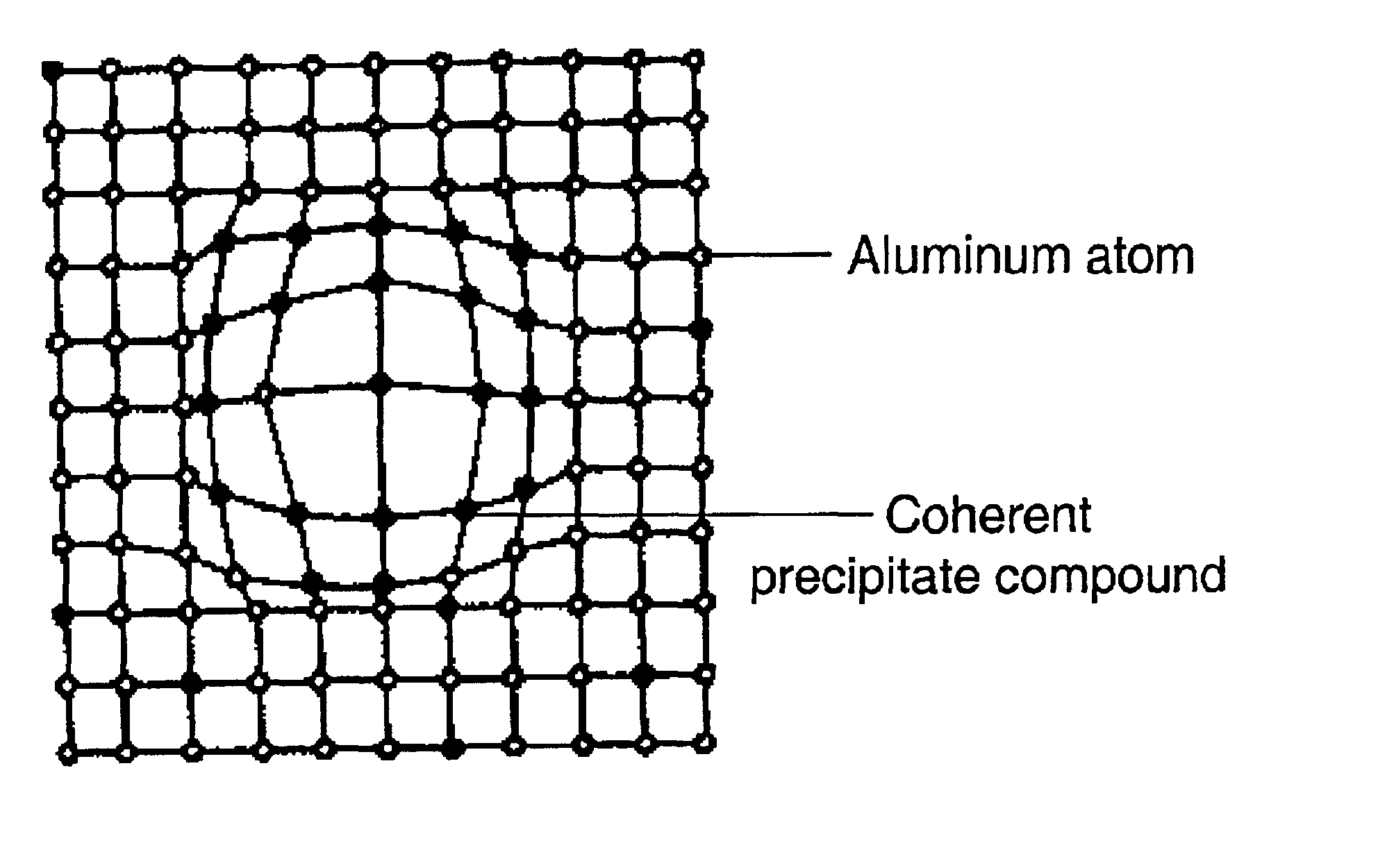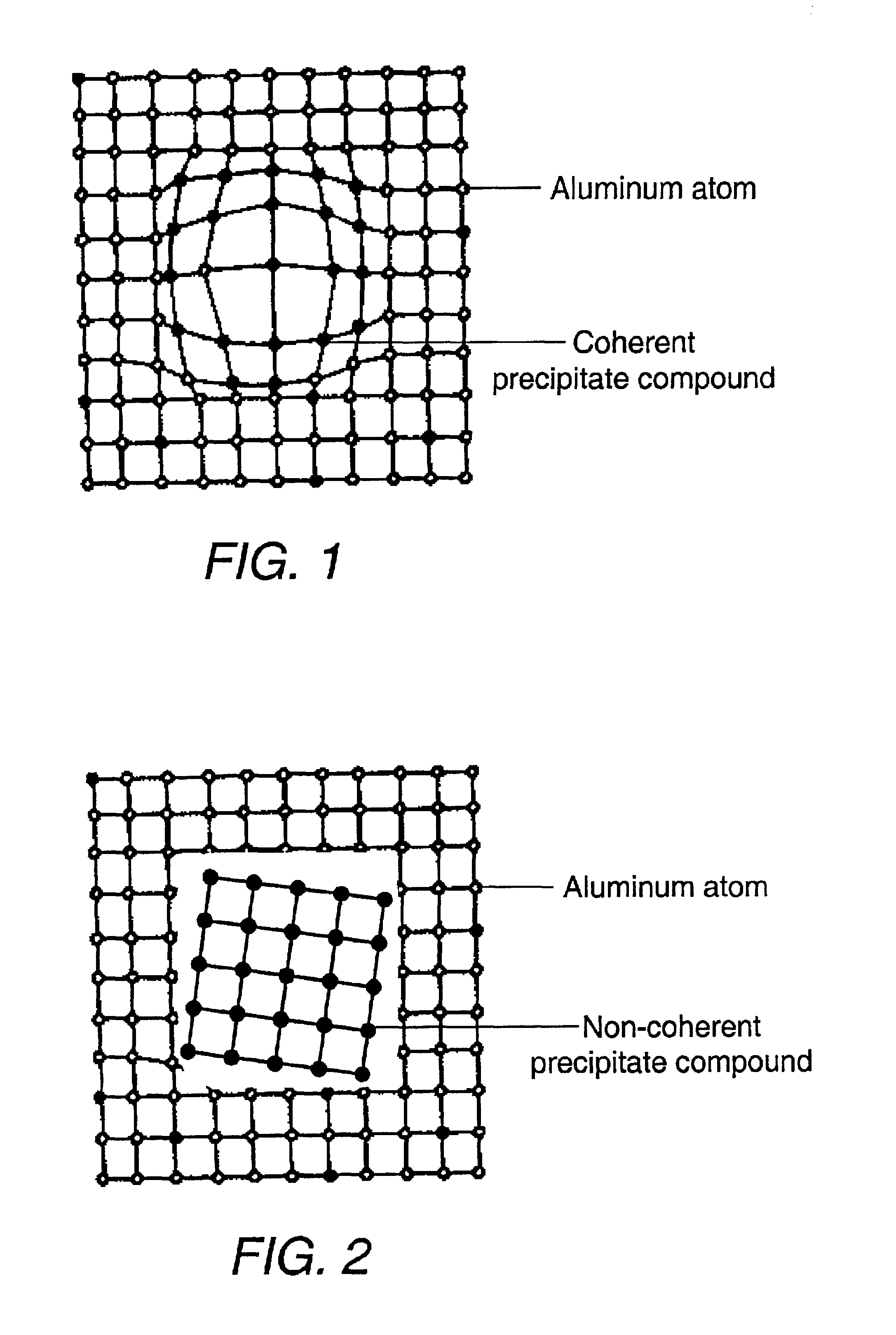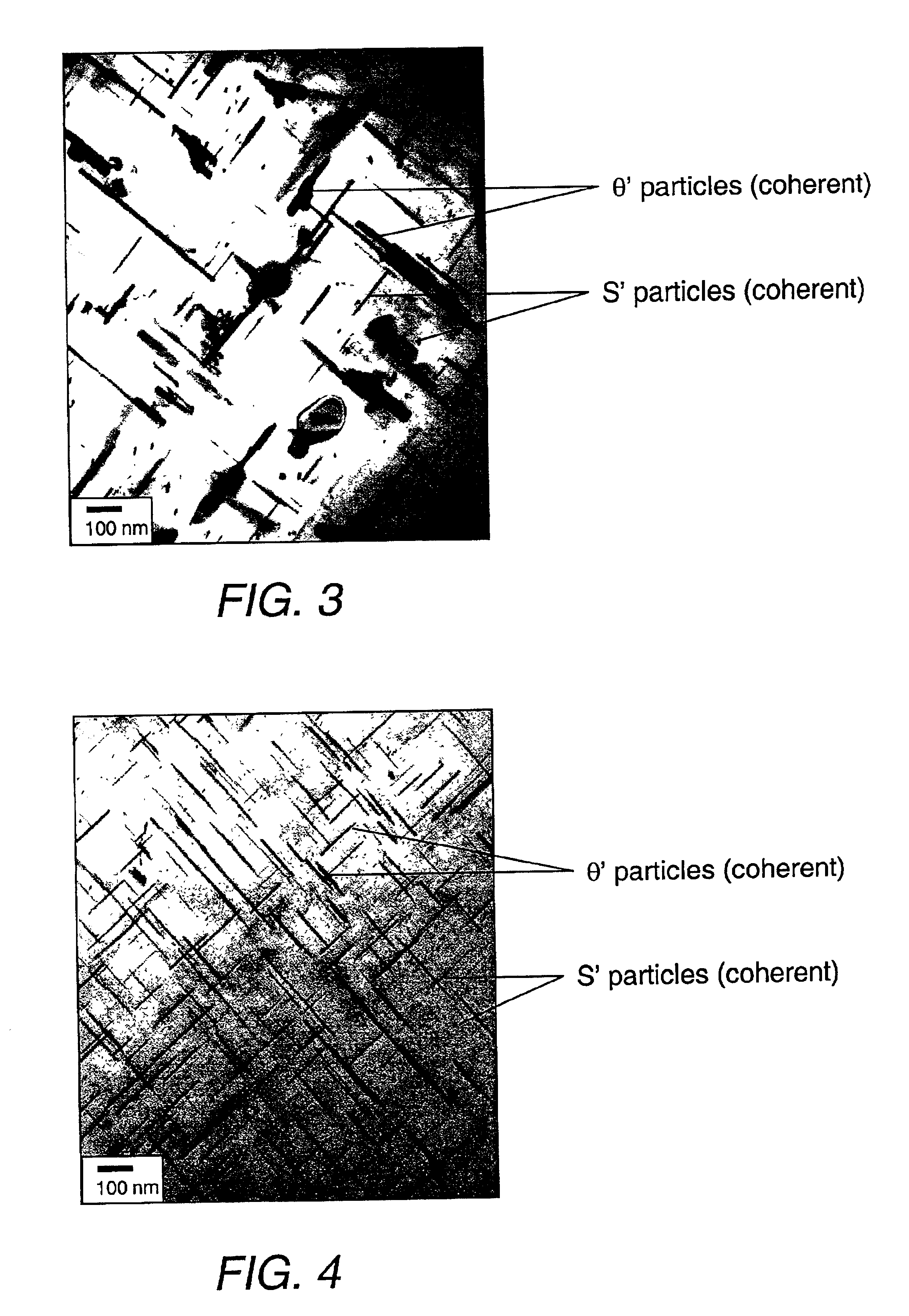High strength aluminum alloy for high temperature applications
a technology of aluminum alloy and high temperature, applied in the field of aluminumsilicon (al — si) alloys, can solve the problems of alloy having little or no practical application, alloy having undesirable microstructure for high temperature applications, alloy lacking lattice coherency between the lattice of aluminum solid solution and the lattice parameters of strengthening particles, etc., and achieves the effect of low cos
- Summary
- Abstract
- Description
- Claims
- Application Information
AI Technical Summary
Benefits of technology
Problems solved by technology
Method used
Image
Examples
Embodiment Construction
[0020]The present invention includes detailed compositional, microstructure and processing aspects through conventional casting processes. The Al—Si alloy of the present invention is marked by an ability to perform in cast form, which is suitable for elevated temperature applications. It is comprised of the following elements, in weight percent:
[0021]
Silicon 6.0-25.0Copper 5.0-8.0Iron0.05-1.2Magnesium 0.5-1.5Nickel0.05-0.9Manganese0.05-1.2Titanium0.05-1.2Zirconium0.05-1.2Vanadium0.05-1.2Zinc0.05-0.9Strontium0.001-0.1 Phosphorus0.001-0.1 AluminumBalance
[0022]Silicon gives the alloy a high elastic modulus and low thermal coefficient of expansion. The addition of silicon is essential in order to improve the fluidity of the molten aluminum to enhance the castability of the Al—Si alloy according to the present invention. At high silicon levels, the alloy exhibits excellent surface hardness and wear resistance properties.
[0023]Copper co-exists with magnesium and forms a solid solution in ...
PUM
| Property | Measurement | Unit |
|---|---|---|
| diameter | aaaaa | aaaaa |
| diameter | aaaaa | aaaaa |
| size | aaaaa | aaaaa |
Abstract
Description
Claims
Application Information
 Login to View More
Login to View More - R&D
- Intellectual Property
- Life Sciences
- Materials
- Tech Scout
- Unparalleled Data Quality
- Higher Quality Content
- 60% Fewer Hallucinations
Browse by: Latest US Patents, China's latest patents, Technical Efficacy Thesaurus, Application Domain, Technology Topic, Popular Technical Reports.
© 2025 PatSnap. All rights reserved.Legal|Privacy policy|Modern Slavery Act Transparency Statement|Sitemap|About US| Contact US: help@patsnap.com



